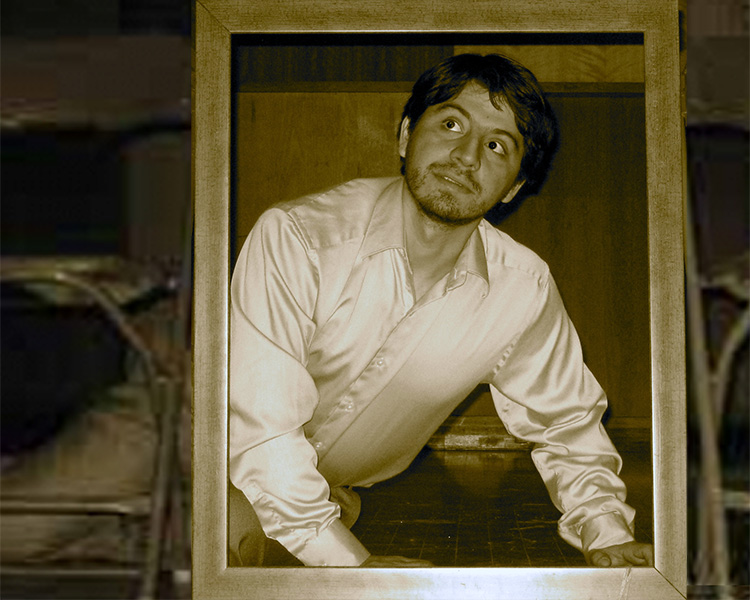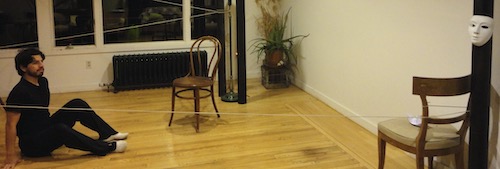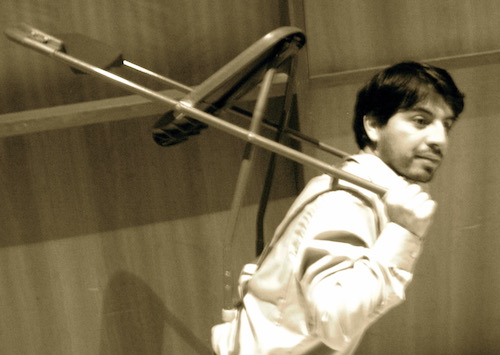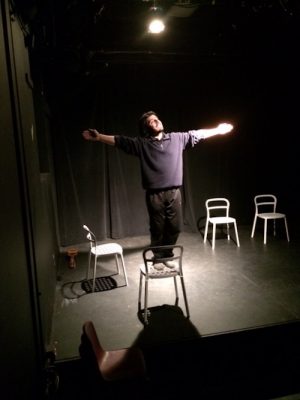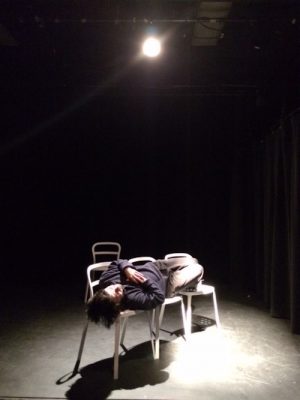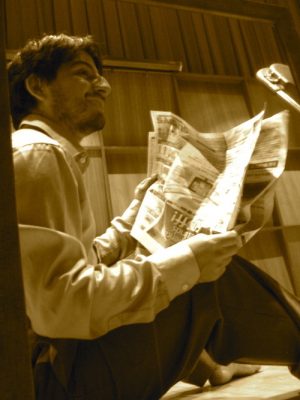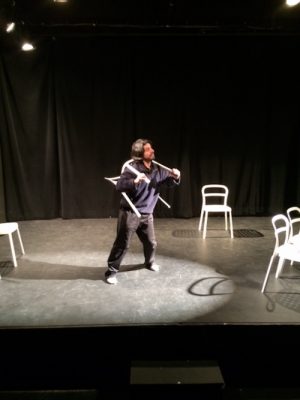2013-2014
“Asterion is one of the names given to the Minotaur, the mythological figure half man half bull, condemn to spend his days trapped in a well-designed labyrinth. However, what happens when the labyrinth turns into a waiting room, and the myth into the body of an immigrant? Asterion talks about existing in two places: past and present, dreams and memory, joy and fear. And with the help of Jorge Luis Borges, the play also inquires deeply about solitude, frustration, utopias and the numberless contradictions that form our own labyrinths and stories.
Scroll down for photos from and about the play.
Asterion, a tale of transformation, takes its name from a poem by renowned Argentine writer Jorge Luis Borges. Diego Mattos wrote this play in Vermont drawing on his own experience as an immigrant from Bolivia. Asterion is one of the names given to the Greek mythical figure of the Minotaur, the offspring of Pasiphae and a white-snow bull. Half man half bull, this monster is condemned by Minos, Pasiphae’s husband, to live in a labyrinth (designed by Daedalus). There he spends his days and nights, never seeing daylight, never seeing his sister Ariadne, only seeing terrified young men and women put in the labyrinth from time to time to be sacrificed. In the end Theseus kills the Minotaur Asterion and escapes the labyrinth holding Ariadne’s thread.
Asterion is also an immigrant, who exists somewhere between here and there, not past, not present, always seeking a place to call home. We all live in personal labyrinths, and dealing with them can sometimes be painful, sometimes revealing. We all have left a place to which we have never returned, sometimes without realizing it. Getting old, we migrate away from the child we used to be, the country we used to inhabit, telling them, ‘I’ll be back.’ But we never return. This play attempts to go back to a place I don’t remember.” Diego Mattos, the author of Asterion.
The Team for Asterion in alphabetical order:
Andrew Albright: Stage tech & special effects designer. Beth Albright: Cashier and long-term supporter. Marita Canedo: Costume and set color advisor. Julian Chobot: Live guitar Saturday. Bill Ellis (guitar variations development) Brad Faucher: set construction. Kirk Fenegan: Live guitar Friday & Sunday and “frog” improv. Georgette Garbes Putzel: assistant director, acting director, lighting board operator, special set and costume effects, poster-program designer. Diego Mattos: director, writer (using texts by Jorge Luis Borges, Augusto Monterosso, Mario Benedetti and Nicanor Parra), montage of the scenes, actor and charango player, music designer developing variations on “Fantasma de Canterville” by Charly Garcia, with the assistance of Phil Yates and Bill Ellis; and the assistance of Kirk Flanagan for the improvisation for the Frog scene. Roger Putzel (poster & program editing, assistant producer, mask operator). We work beyond our special skills.
On stage Diego Mattos plays the charango, a cute little instrument traditionally made of an armadillo shell, now, with different types of wood. It typically has five courses of 2 strings, but other variations exist. The instrument was invented in the early 18th century at the Royal Audiencia of Charcas in present-day Bolivia. When the Spanish conquistadores came to South America, they brought the vihuela (an ancestor of the classical guitar) with them. It is not clear from which Spanish stringed instrument the charango is a direct descendant. It may have evolved from the vihuela, bandurria (mandolin), or the lute. Many stories tell how the charango originated, with its distinctive, diminutive armadillo sound box. One story says that the native musicians liked the sound the vihuela made but lacked technology to shape the wood. Another says that the Spaniards prohibited natives from practicing their ancestral music; they made a lute that they could easily hide under a poncho. Be assured that the charango on stage in 2013 was not made from an armadillo shell.
